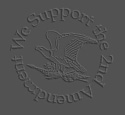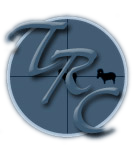Remington 700 Trigger
The question of how to adjust the trigger on the Remington 700
action seems to come up on rec.guns at least several times a
year. Perhaps this will help.
by Tom Grover
The Remington 700 trigger group consists of the trigger, a
trigger connector bar, a sear which rests upon the trigger
connector bar and holds back the cocked firing pin, and a set of
three adjustment screws and assorted springs and pins which hold
it all together. The safety lever is attached to the trigger
group, and blocks the sear motion. It does not block the firing
pin, and so the safety is completely reliant on the soundness of
the trigger group to properly perform it's function. An
important piece of equipment you will need is a trigger pull
weight scale. One can improvise by hanging known weights (e.g.
a coffee can with 3lbs of sand in it) by wire from the trigger
while pointing the muzzle at the sky. If using the latter, the
trigger pull will be roughly equal to the lightest weight you
can hang on the trigger which causes the trigger to fall.
Two screws are on the front of the trigger assembly, and one on
the rear. The top front screw is the trigger stop screw. This
controls the trigger overtravel after sear disengagement. The
bottom front screw is the trigger adjustment screw, and controls
the "pull weight", or the spring pressure holding the trigger in
position. The trigger engagement screw is on the rear of the
assembly, and controls the amount of the sear supported by the
trigger/trigger connector.
After removing the action from the stock, and identifying these
adjustment screws, try giving the mechanism a thorough cleaning
with a cleaner spray and lubricate the mechanism lightly (see
your owner's guide). Sometimes this is all that's required to
blow out leftover assembly grit, or dirt from extensive field
use, and can result in a perfectly acceptable trigger pull.
Note that the adjustment screws will likely be covered with a
locking compound and may not be immediately obvious.
If anything is not clear and apparent at this time, or at any
point along the way, reconsider taking it to a gunsmith. Safety
is paramount.
Okay, here we go:
Remove the trigger guard assembly, and remove the action from
the stock. Cock the bolt in the receiver. The trigger pull
weight is adjusted by turning the trigger adjustment screw
(bottom front): clockwise increases the pull, counter-clockwise
makes it lighter. It doesn't take much, try 1/8 turn to begin
with and then test the pull weight. It is STRONGLY recommended
that you DO NOT attempt a trigger pull of much less than 3
pounds. The stock Remington mechanism is not (in my humble
opinion) intended for a target-style 2 pound (or less) pull
weight. There are readily available aftermarket triggers if
that is your desire. Apply a light coat of loctite, fingernail
polish, or other locking compound to the screw head when done.
The overtravel of the trigger may be reduced by turning the
trigger stop screw (top front of the trigger group) clockwise
until the firing pin doesn't fall when you pull the trigger.
Then hold the trigger back, and turn the trigger stop screw
counter-clockwise until the firing pin falls. Turn about 1/16
turn further and stop. This is about the least overtravel which
still maintains margin for hunting in the field. So long as
this minimum is established, some may prefer more overtravel,
this can be adjusted out further to personal preference. At
this point, most shooters should find the trigger is quite
acceptable. As before, cover the screw head with a locking
compound to prevent it from moving accidentally.
Some may have a rifle which has some "creep" in the trigger
before letoff. The key to this adjustment is in the trigger
engagement, however, in this writer's opinion adjusting the sear
engagement is best left to a gunsmith. I believe this is the
most critical adjustment in terms of safety, and I don't intend
to mess with it. Even Remington's earlier users guides
(pre-liability-suit days) which included trigger adjustment
instructions state to leave this adjustment alone. If someone
out there wants to take a pass at writing for this part, be my
guest. Most people (including myself) should probably only
touch the bottom front screw, the Trigger Adjusting Screw.
After any messing around (including simply cleaning the trigger
assembly) you should probably test as Remington recommends, by
closing the bolt "smartly" at least ten times. The firing pin
should not fall while doing so, but must fall every time the
trigger is pulled. Another method, which requires a good recoil
pad or a carpeted/padded floor, is to verify the chamber is
empty, cock the bolt, then bounce the butt firmly on the floor.
Either of these methods should get the firing pin/sear/trigger
combo bouncing around pretty well, and test if the rifle is
likely to discharge accidentally on being bounced, bumped, etc.
Verify that the firing pin does not fall during any of this,
including cycling the safety on & off prior to pulling the
trigger.
A couple more comments:
If you hunt in cold weather, gloves can really interfere with
trigger feel. Consider going to a 4-5lb pull for that scenario,
to prevent accidental discharge.
Do NOT touch the trigger while pushing the safety to "fire".
This applies to ALL firearms, but it's definitely possible to
pull the trigger unintentionally while pushing the safety off on
the Model 700 (and probably others on which you can operate the
safety without taking your shooting finger out of the trigger
guard).
Good luck, and safe shooting!


